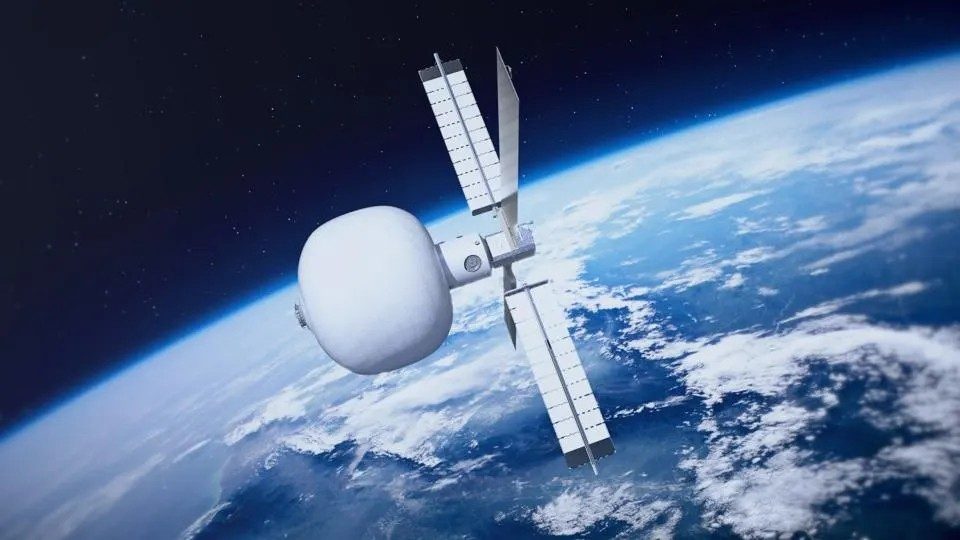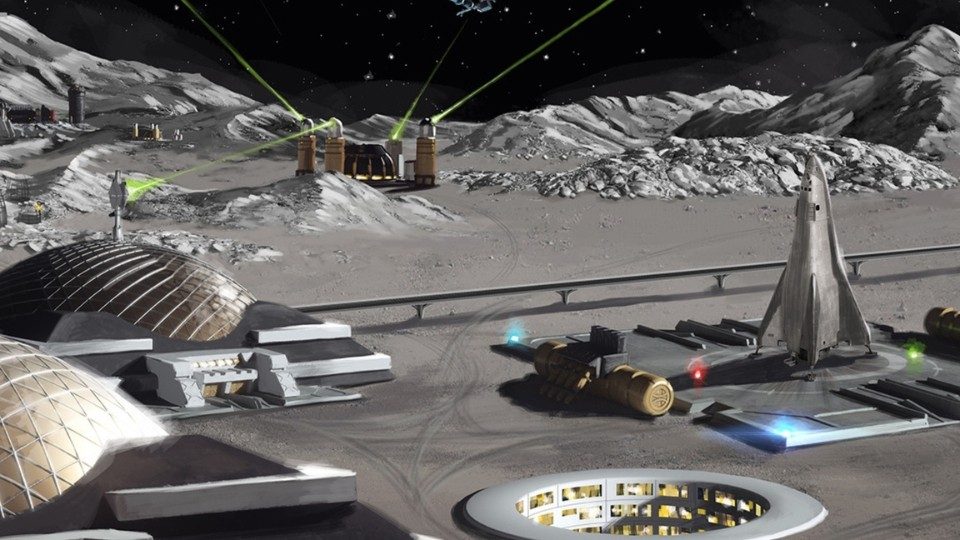Science fiction is becoming reality: we are going to the Moon and Mars. Artemis is taking what we’ve learned from the days of the Apollo program to go beyond — landing on the Moon but also building a presence there that eventually takes us farther into the solar system than we have ever gone. The building blocks of space infrastructure required to carry humanity on this journey are in development today. At Lockheed Martin, we have a vision for how this future will play out - how each additional piece of infrastructure will build on the next as we explore space, build a lunar economy and settle permanently and sustainably among the stars.
Our approach for a responsible and effective path forward is water-based, nuclear-enabled and commercially-invested.
Water-Based

Water is essential to life. It has many uses, makes the most efficient rocket fuels and is abundant throughout the solar system — making it the resource of choice for living off the land.
Nuclear-Enabled

Our future in space leaves fossil fuels behind. Powerful, safe and clean nuclear technologies keep the lights on through the dark lunar night and propel us faster and farther into the solar system.
Commercially-Invested

This new space age will be a collaborative effort between space agencies and private companies. A robust lunar economy that provides value to Earth is the most effective way to build an efficient, permanent presence.
Transportation
Sailing Safely through Deep Space
Getting people and cargo safely to the Moon and back is no easy feat. Orion is the only deep space-rated vehicle capable of transporting astronauts through the most dangerous environments. Lunar landing systems, from the lightest cargo landers to the large crew landers of the Sustaining Lunar Development (SLD) program — utilizing Lockheed Martin’s Cislunar Transporter with liquid hydrogen and liquid oxygen refueling — get us to the surface and back. Gateway is the space station that will orbit the Moon. Finally, near-future nuclear systems will change the way we travel through space.
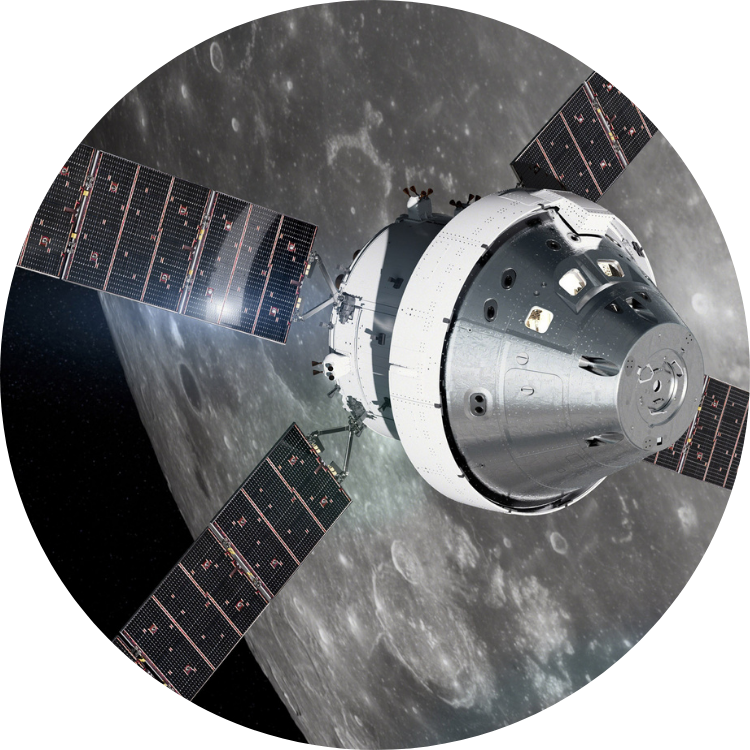
Mobility
The World Was Built on Wheels
Multipurpose mobility will allow us to explore the Moon's extreme surface terrain, discover useful resources like water, build roads and landing pads, assemble habitats, offload cargo from landers and accomplish groundbreaking NASA science. All sizes and capabilities are needed — from tiny, short-distance helpers to vehicles capable of transporting hundreds of pounds across (or over) hundreds of miles in the dark lunar night.
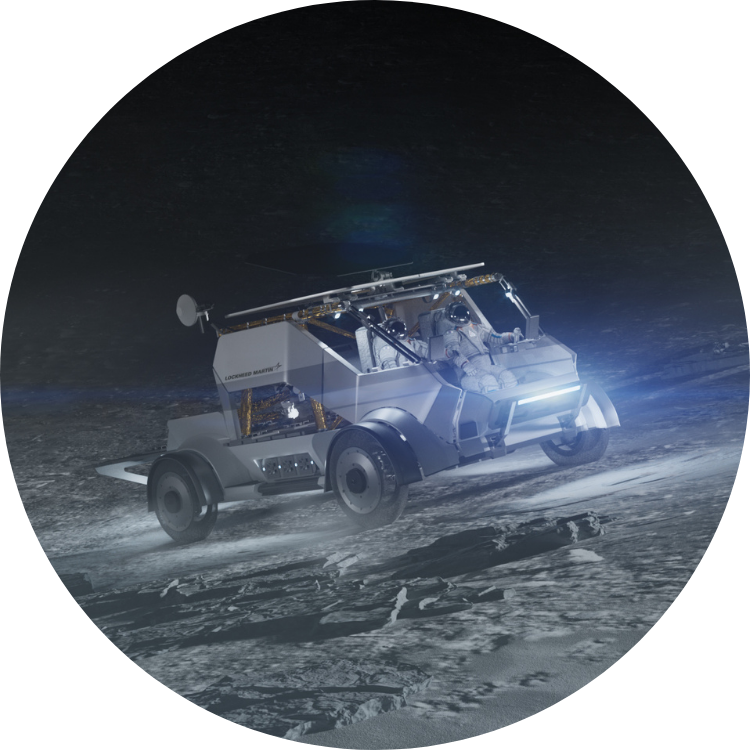
Power
Lighting the Way
In the words of Robert Heinlin, "The Moon is a harsh mistress," with long periods of darkness at the equator and areas of the poles in perpetual shadows. Towering solar arrays capture the Sun’s power with an emerging power grid of cables and energy beams that carry power over rough terrain and into craters of permanent darkness. Nuclear fission provides high, continuous power regardless of the Sun's location.
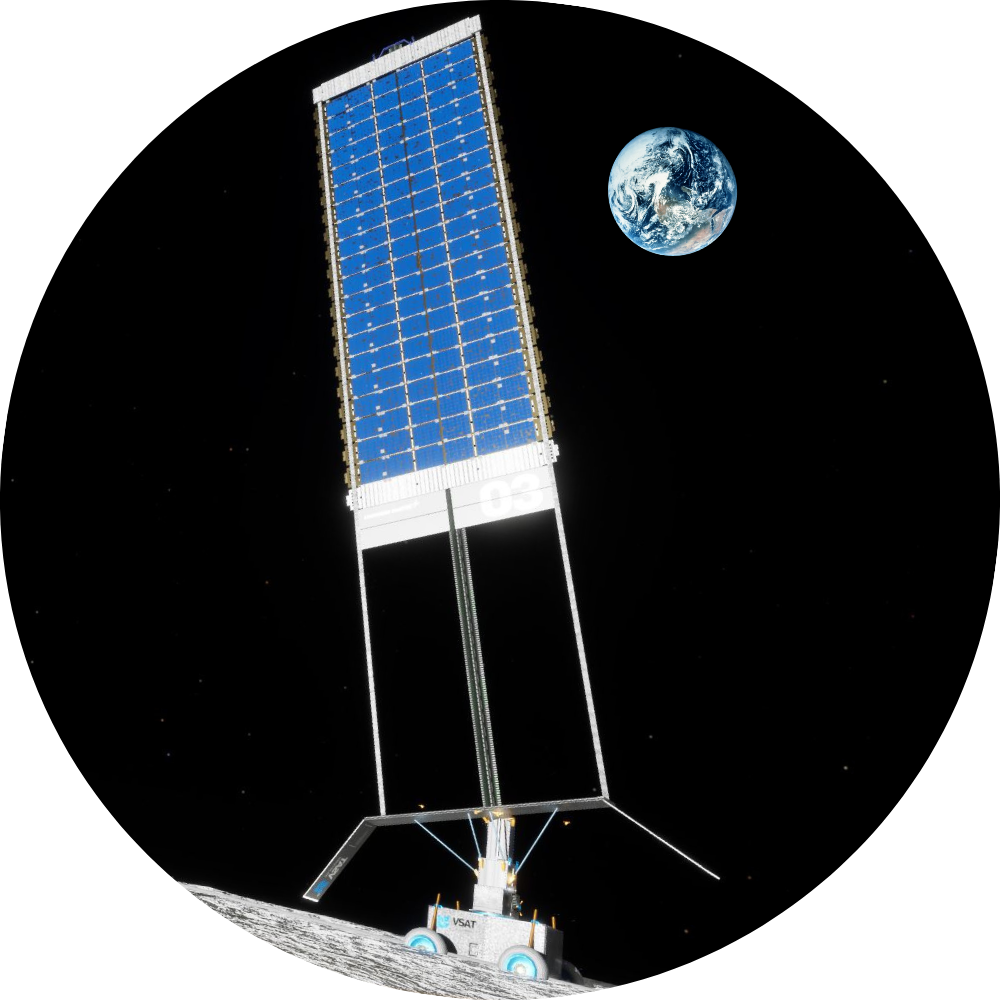
Habitation
Our Home Away from Home
Habitats at the Moon, whether on the surface or in orbit, need to be safe, reliable, lightweight, spacious and able to shelter us from the radiation and dust of the harsh lunar environment. Inflatable "softgoods” technologies outperform traditional metal structures, including better radiation protection, higher strength, lower cost and the ability to launch tightly packed then expand on the surface.
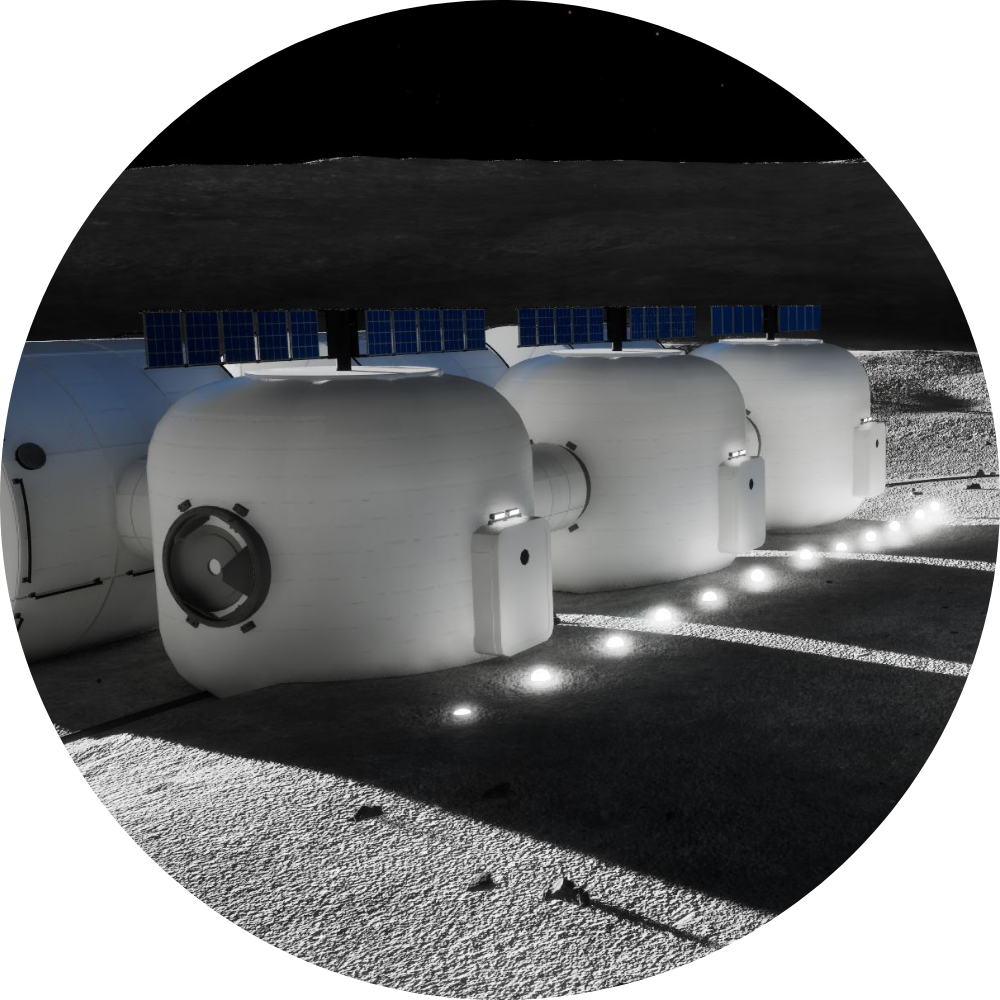
Space Resources
Living Off the Land
In-Situ Resource Utilization, or ISRU, is the space community's term for using the resources found in space. Water ice harvested from south pole craters can be turned into propellant. This enables cheaper and more routine access to and from the Moon and carries us more effectively out to Mars. Even Moon dust, or “regolith,” can be hardened into roads and landing pads, or split into oxygen for life support and construction materials for habitats and spacecraft. The more material we can use on the Moon, the less we launch from Earth — unburdening our environment at home and helping us move more sustainably and permanently into the solar system.
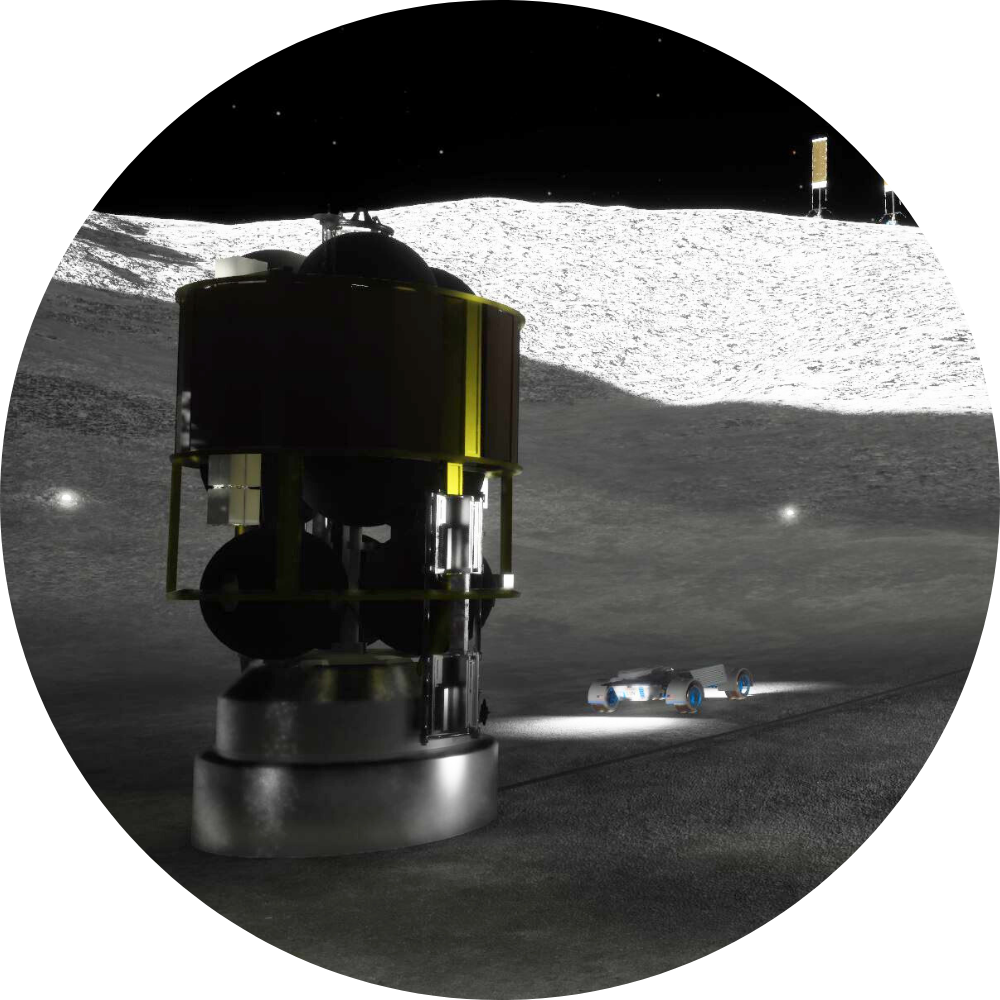
Mars
The Next New Frontier
Living, working and building at the Moon — and doing it sustainably, effectively and permanently to carry us to Mars — requires all the technologies on this page, including game-changing development of nuclear systems and liquid hydrogen propulsion. It’s an investment, one we at Lockheed Martin believe is well worth it. A permanent presence on the Moon lets humanity test technologies for Mars and practice living farther away from Earth for longer. The lunar economy that will emerge to help establish this presence will keep value flowing back to Earth as humanity reaches for the stars.
The path to Mars has always been through the Moon. It is water-based, nuclear-enabled and commercially invested — and it’s a path we’re excited to travel with you.
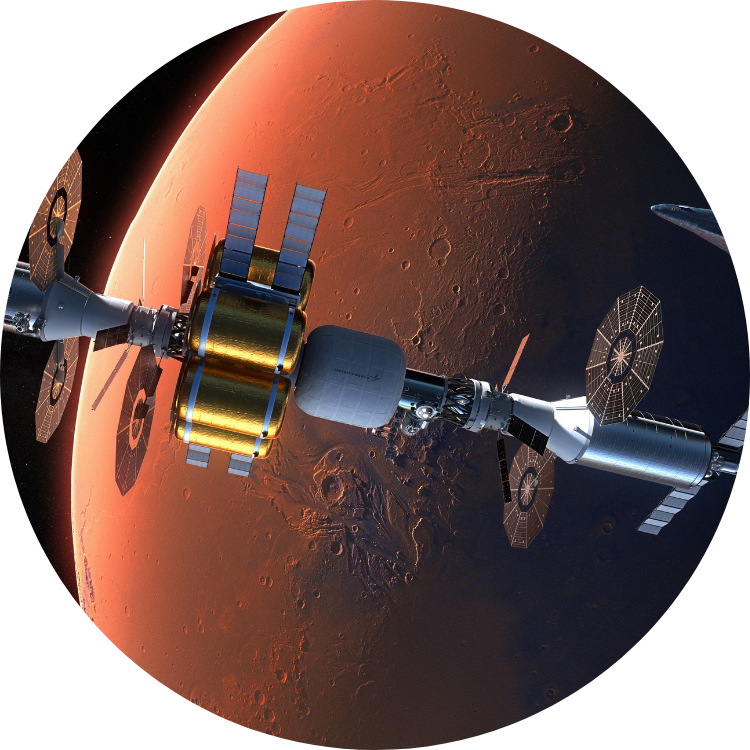
In the News




